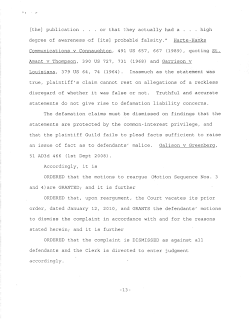Last month's victory was welcome relief that the IPA and five named defendants have been vindicating for blowing the whistle on Graphic Artists Guild.
Artist's organizations like AMI as well as individuals that support the formation of an American Collecting Society are openly speaking out. That this climate of fear is falling away is a tremendous victory for artists.
But even though the news that GAG's lawsuit was thrown out, until all artists begin to see their earned income returned to them, this is no victory. And until these organizations that continue to take foreign royalties are held accountable artists will never benefit from their royalties.
Decision Vindicates Artists, Validates American Illustrators' Collecting Society
Artists' Reprographic Royalties Remain Unaccounted For
(LEXINGTON, KY) May 12, 2011 - The Association of Medical Illustrators (AMI) applauds Judge Debra James' ruling dismissing the million-dollar tortious interference and defamation lawsuit brought by the Graphic Artists Guild (GAG) against the Illustrators' Partnership of America (IPA) and five named defendants.
GAG alleged that IPA interfered with a "business relationship" which enabled GAG to collect and use artists' reprographic royalties, by IPA's creation of a collecting society to return royalties directly to artists.
When published artwork is photocopied, U.S. and international Reprographic Rights Organizations (RROs) collect royalties through fees, including photocopying charges, on behalf of copyright holders whose work appear in those publications. The American Society of Illustrators Partnership (ASIP), founded, in part, by members of the IPA, is the first and only domestic illustrators' copyright collecting society legally recognized by our federal government to collect and distribute royalties on behalf of illustrators- including medical illustrators-who assign their mandate to ASIP.
IPA's statements-that between 2000 and 2007, GAG took more than $1.5 million of artists' royalties and has not returned any to artists-were found to be true by Judge James....
Read the rest of the press release:Association of Medical Illustrators


